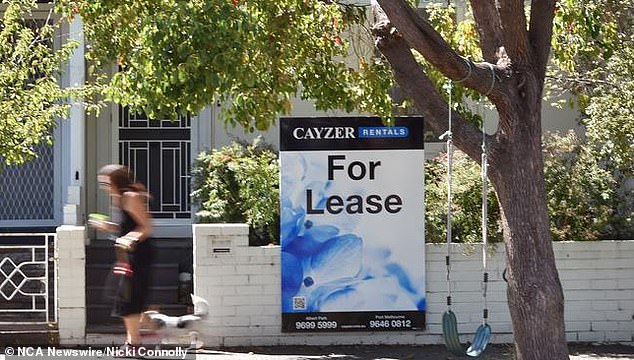How the high demand for rentals is driven by the working-from home revolution – as bank boss warns there’s no ‘quick fix’ for Australia’s housing crisis
An increase in working from home has contributed to rising demand for rental properties, the Reserve Bank’s chief economist said.
Australia’s population of almost 27 million people lives in approximately 11 million households, with the average number of people per household being approximately 2.5.
But on Thursday, RBA chief economist and assistant governor Sarah Hunter said the shift to working from home, which gained momentum during the pandemic, has also contributed to this change as Australians look for extra rooms – not to house a person , just a computer. .
Dr. Hunter (pictured) also warned there is no ‘quick fix’ to Australia’s housing crisis
‘While some people have returned to their workplace full-time, the number of people working from home has increased – for many, a home office space is now highly desirable,’ Dr. Hunter at a business conference in Hobart on Thursday.
‘This suggests that the recent decline in the average number of people per home will be at least partly permanent.’
Should the decline in the number of people per home over the past four decades be reversed, Australia’s housing shortage could be significantly reduced, Dr Hunter said.
“If for some reason the average household size were to rise again to 2.8, we would need 1.2 million fewer homes to house our current population – not a small difference,” she added.

Rents have soared in the capital’s markets, putting pressure on tenants’ household budgets
Landlords do not agree to rate increases
Later in her speech, Dr. Hunter that there was “little to no evidence” that landlords have passed on the costs of rising mortgage repayments to their tenants.
With borrowers experiencing 13 interest rate increases in the past two years, landlords, such as owner-occupiers, have seen their repayments increase, raising concerns that these higher costs have been borne by tenants.
But the RBA’s chief economist said preliminary analysis from the central bank showed higher interest rates were not the main cause of higher rents in the short term.
“The observation that market rents and interest rates move together appears to be a case of correlation rather than interest rate increases causing rents to rise,” Dr Hunter added.
‘There are little to no indications that higher interest costs have a direct impact on rental prices in the short term.’
On the contrary, rental market conditions, expressed in vacancy rates, were mainly responsible for the recent increase in prices.
By the most recent measures, rent affordability has fallen to a 17-year low, with rental price growth outpacing many other goods and services in the economy.
Dr. Hunter also warned there is no “quick fix” to Australia’s housing crisis.
“Demand pressures, and therefore upward pressure on rents and prices, will continue until new supply becomes available,” Dr Hunter said.
‘We expect it will take some time for this response to materialize given the current level of approvals for new homes and information from the liaison that many projects are still not viable.’
Historically, a rise in home prices and rents has led to a wave of new construction projects as developers seek to capitalize on increased profitability.
However, with the sector facing a ‘perfect storm’, Dr. Hunter that capacity constraints in the sector continued to hamper activity.
“Companies in our liaison program are reporting that there is currently a shortage of finishing work as the large number of projects started during the pandemic near completion,” she said.
The senior RBA official’s comments come amid an ongoing political battle over rising costs and anemic supply of rental properties.
While Labor has thrown its support behind measures that will boost the supply of social and affordable housing to alleviate runaway rents, the Greens have backed more unconventional methods, including rent freezes and setting up a public property developer.
